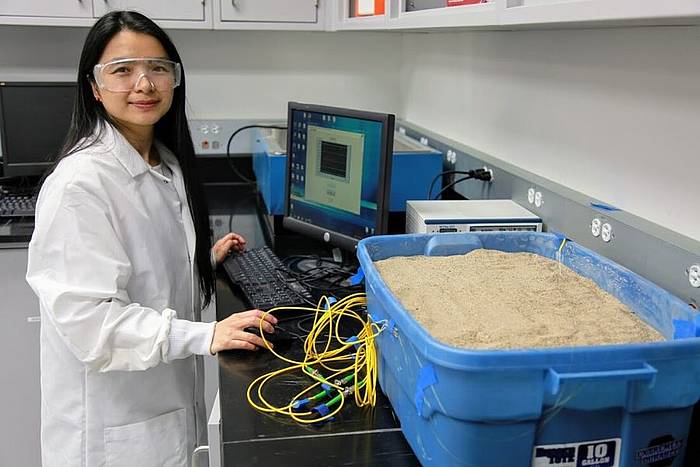
Located at the crossroads of two interstate highways in the heart of massive agricultural production means North Dakota is a major transportation hub. Vehicles of all sizes and shapes use the state’s highway system to transport goods to and from markets. Monitoring that traffic to develop more “intelligent transportation systems” is the goal of ND EPSCoR-funded research by Mu'ath Al-Tarawneh, a recent Doctoral Dissertation Assistantship awardee, and Ying Huang, associate professor in civil and environmental engineering at NDSU and Advance Focus on Resources for Women's Advancement, Recruitment/ Retention and Development (FORWARD) Leap Award recipient.
“We have used various sensors to make our roads and cities smarter,” Huang said. “We’re looking for new ways to use technology to enhance safety and make our models more responsive to actual traffic patterns.”
Because the weight and frequency of a vehicle on a road can impact the length of time before a road must be maintained or replaced, gathering more information about vehicle traffic is critical. In addition, engineers want to know where, how, and when vehicles are traveling in order to create traffic systems that help keep drivers safe.
The vehicle classification system developed by the national Federal Highway Administration divides vehicle type into 13 categories depending on the number of axles and the wheelbase. Current systems that monitor traffic handle singular measurements such as weight, number of vehicles, length of a vehicle, or speed, but the individual results may not be integrated with the other reporting systems.
According to Al-Tarawneh and Huang, classifying vehicles becomes difficult because vehicle patterns overlap. To distinguish between different vehicle categories, they developed specialized machine learning algorithms to classify vehicles based on traffic data collected from embedded three-dimension sensors that combine multiple tracking devices into one system.
“Our newly developed technology is a gamechanger,” Huang said. “We have created a proof of concept tracking system that has been piloted with the Minnesota Department of Transportation on a test section of I-94,” she said. “This integrated system is designed to last as long as that section of pavement, doesn’t require a technician on-site, and has a reasonable cost.”
Huang’s future research will continue to refine this evolving technology. As for Al-Tarawneh, the DDA funds helped him finish his dissertation, Huang said.
“The research funds from the Track-1 were very helpful for both of us,” she said. “For Al-Tarawneh, it helped him gain confidence and strengthened his resume. He had three job offers when he graduated.”
This article originally appeared in the November 2019 ND EPSCoR Newsletter.
As a student-focused, land-grant, research university, we serve our citizens.




